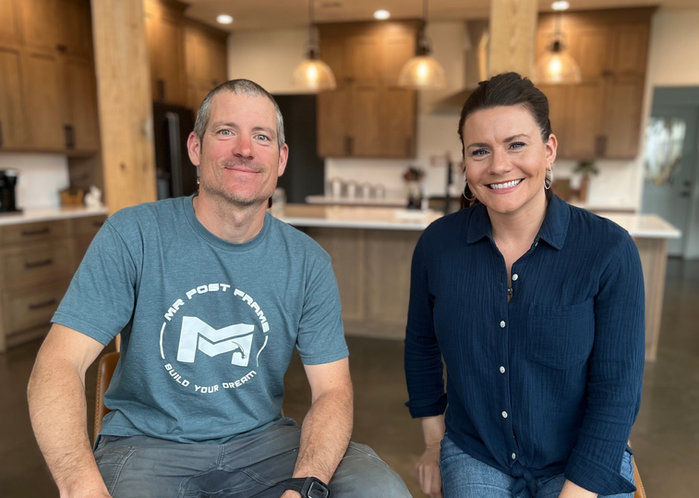Spray Foam Insulation For Your Barndominium | MAD County Standard | Part 17
- MR Post Frame
- Jan 8, 2024
- 3 min read
Hey, everyone! Welcome back to MR Post Frame. Today, we're diving into the world of spray foam insulation for your post-frame home or building.

We have all the metal up on the Madison County Standard barndominium build. So, the next step is spray foam. I'm going to go through how we prepare our post-frame structure for spray foam. I always like to say, I'm not going to tell you guys what you need to do; I'm just going to explain to you what we do and why we do it.
We have sheathing on the roof, but we do not on the walls. On the walls, we just have a house wrap, and then we have our metal steel. If you're asking yourself why we do not have plywood, it's because the shear strength in a post-frame comes from our steel. First, for those of you who don't really understand post-frame, I'll quickly go through and kind of explain to you how it works. Since all the structure is kind of exposed on the inside right now.

On a typical stick-frame house, you're going to have 2x6s 16 inches on center. You have to have a continuous footing. You have a bottom plate and top plates—this is a two-story, so in order to frame up a stick-frame house, you would have to frame up all your exterior lower walls, then your floor system, then all of your upstairs walls before you can enclose it. So, it leaves your structure exposed longer than it does with a post-frame. That's one huge benefit of post frame homes—you can get the entire structure done and then do all the inside stuff.
In a post frame structure you have columns that are eight feet on center, and then we have girts, 2x6s in this case, that run from column to column tying them all together. So, if you look at this window, this window doesn't have to have a header. You actually make a window box, screw it in through your girts, and then the weight of that window is transferred out to your column and down to your footing. That's how it transfers the weight. So, these columns and walls only support the weight of the walls and the roof. There's no interior walls required to support this structure, and despite what people say, these are incredibly strong.

The construction process involves strategically connecting columns from the footings to the trusses, creating a robust structure. The trusses sit within the columns, ensuring a high level of strength and interconnection, preventing independent movement. As the construction progresses to the spray foam phase, various preparations are outlined.
Underground plumbing and electrical work precede the pouring of concrete, which includes a vapor barrier and two inches of polystyrene. Additionally, two inches of polystyrene extend two feet into the ground, a measure influenced by regional variations. The construction approach involves science-backed practices for frost protection beneath the slab, particularly beneficial for in-floor heating.
Following concrete pouring, excess vapor barrier is trimmed to allow the bottom polystyrene to come up and be secured by the bottom girt, a green-treated 2x4 serving as the interior bottom girt. Interior framing employs 2x4s placed two feet apart. The spray foam application, carried out by a specialist, fills the bottom cavity, connecting the concrete to insulation below and filling all cavities up the side, including those behind the columns, resulting in an almost 100% thermal break.

While the girts provide some R-value in wood, the majority of the structure functions as a closed-cell spray foam wall. The top girt and plywood are added at the top to isolate the wall from the attic space, especially if it's unheated. The attic insulation involves blown-in fiberglass with vented soffit and ridge, further isolated from the walls by spray foam.
The spray foam application utilizes three inches of closed-cell spray foam, surpassing the two-inch threshold that serves as a vapor barrier. This provides an R-value of approximately R21, meeting residential building code requirements. The closed-cell nature of the foam adds both insulation and structural value, contributing to the overall strength of the structure.
That wraps up our video explaining how we tackle spray foam and what makes a post frame build a post frame build. Post frame is different than a regular stick frame home so always keep that in mind.
Thank you,
MR Post Frame

Patreon Group:
Interested in tackling your build on your own? If you want to explore the possibility of being your GC or self-building, our Patreon membership is for you! It's a community of like-minded people offering support, discounts, Q/A, and more.